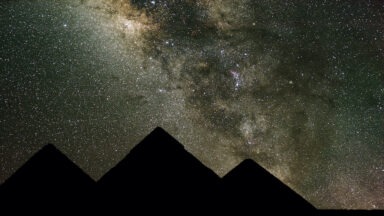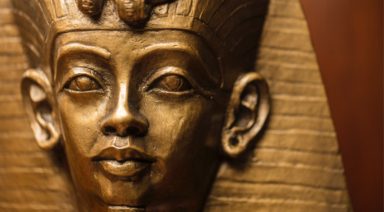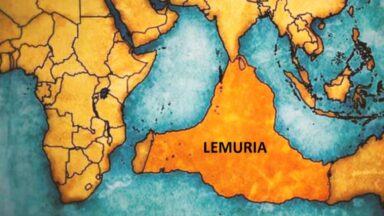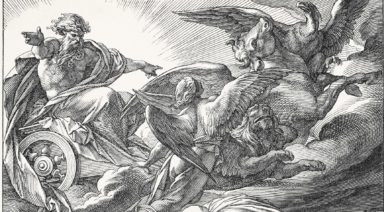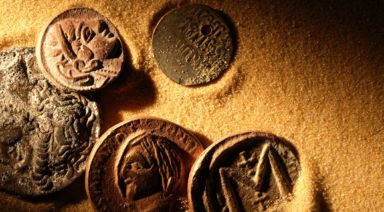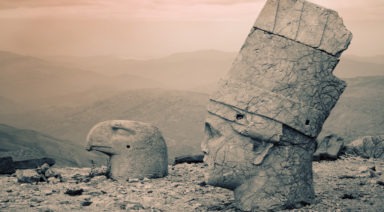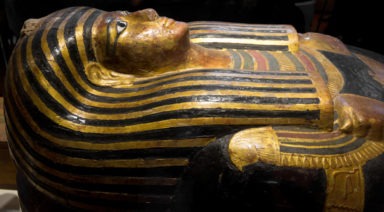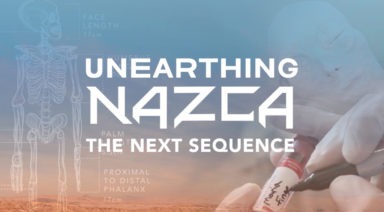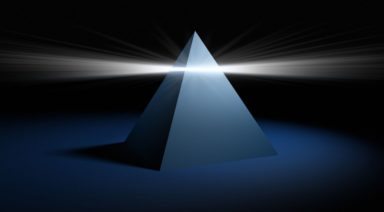Ancient Egyptian Mystery Schools and Freemasonry
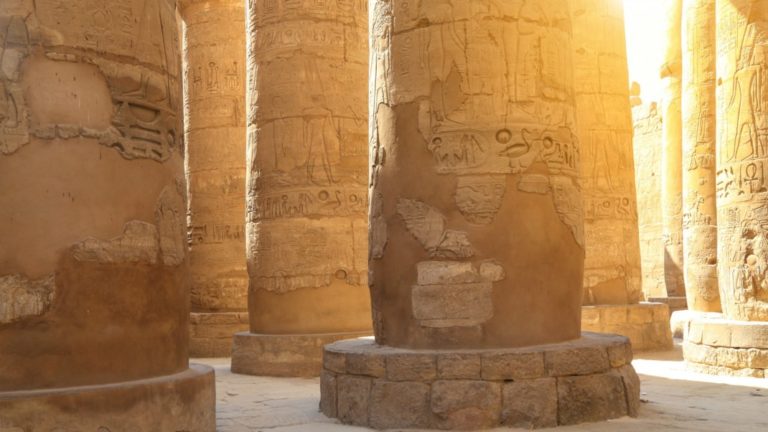
Freemasonry means different things to different people. Ask ten Freemasons what they do and why they do it and you’re likely to receive ten different answers. But common to every variation of an answer will be the strain that Freemasonry makes good men better, being as it is a system of self-improvement tried and tested over centuries.
Why Ancient Egypt?
The uneducated with no interest in mystical traditions and the esoteric may regard Ancient Egypt as little more than a place of pagan worship, strange hieroglyphics, and monuments erected by thousands of Hebrew slaves. But those more learned, especially those having undertaken the initiative rituals of Freemasonry, will see a link between the Egyptian metaphysical tradition and modern mystery schools, of which Freemasonry is one.
Invitation into the Mysteries
Ancient Egyptian history author, Alphonse Mariette, wrote of the Egyptian mystery schools, “To the initiated of the sanctuary, no doubt, was reserved the knowledge of the god in the abstract, the god concealed in the unfathomable depths of his own essence. But for the less refined adoration of the people were presented the endless images of deities sculptured on the walls of temples.” The very same could be said of Freemasonry.
It is Freemasonry’s aim to educate an initiate on the god concealed in the unfathomable depths of his own essence, represented by the letter G in the middle of the square and compasses, symbolizing the divine spark within, the god essence of oneself.
The Christian Priest, Origen, said that “The Egyptian philosophers have sublime notions with regard to the Divine nature, which they kept secret, and never discover to the people but under a veil of fables and allegories.” Once again, we see the similarities to the teaching methods of Freemasonry which is performed by way of symbolism and allegory and never revealed to the uninitiated (known as cowans).
Initiation Rituals
Masonic teaching centers on its initiation rituals. Each of Freemasonry’s three degrees takes the candidate through a journey steeped in history, symbolism, and allegory to teach him lessons of how to raise his divine spark, realize his relationship to a higher power (God, Grand Architect, Supreme Being, etc) and live a life of moral rectitude. Occult scholar, Lewis Spence (1874 – 1955) tells us of the same goal of initiation in Ancient Egypt:
“The purpose of initiation is a conventional attempt to realize man’s place in the universe and in the divine scheme of things, and for this, I believe, the Egyptian Mystery System achieved for the first time in an orderly and philosophical manner … Have we no lessons to learn from Egypt? Aye, the greatest in the world, the knowledge of that divine introspection which alone can give man the likeness of the Divine.”
Masonic author, Albert Mackey, believed in a relationship between modern Freemasonry and Ancient Egypt. Wrote Mackey: “The identity of design and method in the two systems, as illustrated by the division—into steps, classes, or degrees—to which both were subjected, viz., lustration (purification, or preparation), initiation, and perfection.”
The Widow’s Son
Another link between modern Freemasonry and Egypt is the Isis – Osiris story that formed the crux of the Ancient Egyptian belief system.
In the Egyptian rites, Horus is the savior-avenger, son of Isis, magically conceived through ritual after the brutal murder of her husband/brother Osiris. We can apply this myth to modern Freemasonry’s allegory of the murder of Hiram Abiff, the chief architect of Solomon’s Temple. Isis, made a widow by Osiris’ murder (Freemason’s are called Widow’s Sons), gives birth through initiation ritual to Horus, the redeemer, raised solely that me may avenge the destruction of wisdom (by Set aka chaos) and restore peace, harmony and the just god, in whom there is no death (the Divine Spark within).
The Similarity in Symbols and Teaching
Other similarities between Freemasonry and the Egyptian Mystery Schools are seen in certain Masonic symbols and initiation procedures.
When he first enters a lodge room for initiation, the candidate for Freemasonry is blindfolded and has a rope tied around his neck by which he is led in a circuit of the room. This rope is called a cable tow.
The Cable Tow
The cable-tow is purely Masonic in meaning and use, but as with many Masonic symbols, it is rooted in antiquity. Vases from ancient Mexico have been unearthed that show candidates proceeding through a ceremony of initiation in which they are being taught a sign while wearing a noosed rope around their necks. In the religious ceremonies of the Brahmins, Greeks, and Druids, halters were worn around an initiate’s neck. In the mystery schools of Ancient Egypt, a chain was placed around a candidate’s neck as part of his preparation for initiation. As in Freemasonry, the Egyptian candidate was also blindfolded to represent a state of darkness before emerging into the light of knowledge when the blindfold was removed.
The White Apron
When a candidate becomes a Freemason, he is presented with a white apron consisting of a square overlaid with a triangle. The apex of the triangular flap represents the divine spark we must endeavor to recover. It is the part of us made in the image of our Creator, and there’s no better geometric figure to symbolize this than the triangle. After all, geometrically a triangle is the very first shape that can be made by drawing straight lines. This is why the number 3 was venerated by the ancients and still is to this day.
The Triangle of Divine Spark
In Judaism, the triangle represents the past, present, and future. To the Chinese: heaven, earth, and water. To the Hindus: creation, preservation, and renewal. The three points of the triangle also represent the conscious mind, the subconscious mind, and the collective unconscious. The Ancient Egyptian ceremony of initiation led the candidate to a door shaped exactly as a Masonic apron: a triangle over a square, symbolizing his progression from an earthly, material existence (square) into a heavenly, spiritual existence of higher learning (triangle).
The Point Within a Circle
The Masonic symbol of the Point Within a Circle inside two parallel, perpendicular lines is steeped in antiquity. Early Egyptian monuments have been discovered inscribed with the symbol of God — represented by the Alpha and Omega — in the center of a circle bordered by two perpendiculars, parallel serpents. In many ancient belief systems and mystery schools, a circle was used to symbolize God as, like a circle, God has no beginning and no end.
The Honeycomb
One of the emblems of the third degree of Freemasonry is the honeycomb. Many ancient civilizations revered bees and honey. The Ancient Egyptians developed methods of advanced apiculture as far back as 3000 BCE. Menes, the first King of Egypt, who ruled somewhere between 5000 BCE to 4000 BCE, was called ‘The Beekeeper,’ a title bestowed on all subsequent Pharaohs.
Depictions of bees and honey are prevalent on many Egyptian carvings including the Flamic and Pamphilic obelisks, the obelisk of Luxor, the pillars of the Temple of Karnak and on statues of Rameses II. Even the Rosetta Stone, which dates to 196 BCE, was etched with pictures of bees. Royal tombs in Egypt also show the importance of beekeeping and honey, including the enormous sarcophagus of Rameses II which includes numerous pictures of honeybees. Foodstuffs created by bees, such as pots of honey, honeycombs, and honey cakes, were placed by the sarcophagi as food for the gods. Even Alexander the Great requested that his body be wrapped in honey upon his death.
Keeping Hush, Hush
Secrecy and silence play a big part in Masonic teaching but are not exclusive to the organization. Wellins Calcott, author of A Candid Disquisition of the Principles and Practices of the Most Ancient and Honorable Society of Free and Accepted Masons (quite possibly the longest book title ever), wrote of the ancient veneration of secrecy and silence:
“We shall find that the old Egyptians had so great a regard for silence and secrecy in the mysteries of their religion, that they set up the god Harpocrates, to whom they paid peculiar honor and veneration, who was represented with the right hand placed near the heart, and the left down by his side, covered with a skin before, full of eyes and ears, to signify, that of many things to be seen and heard, few are to be published.”
Apuleius, who was an initiate in the Mysteries of Isis, said:
“By no peril will I ever be compelled to disclose to the uninitiated the things that I have had entrusted to me on condition of silence.”
The best-known champion of silence and secrecy was Pythagoras, who ventured to Egypt to study the Mysteries, which he later brought back to Greece. To become a member of the Pythagorean School, an initiate took an oath of silence for two to five years. Novices were called ‘Listeners’ and were not permitted to partake in class discussions, but only to listen so the teaching could be absorbed before entering into an intellectual debate on what they learned.
The connections between Ancient Egypt and modern Freemasonry are many, and only a few are presented in this article. To say that Freemasonry was born from the Egyptian Mystery Schools and their initiation rituals is true in part. Nobody can claim to know the full history of Freemasonry and the origin of each of its symbols. The Egyptian Mystery Schools played a part in its development, as did those of the Greeks, Romans, Druids, Essenes, Cathars, Rosicrucians, Alchemists, and the guilds of the Medieval Stone Masons.
The Tall, Red-Headed Demi-Gods From Orion
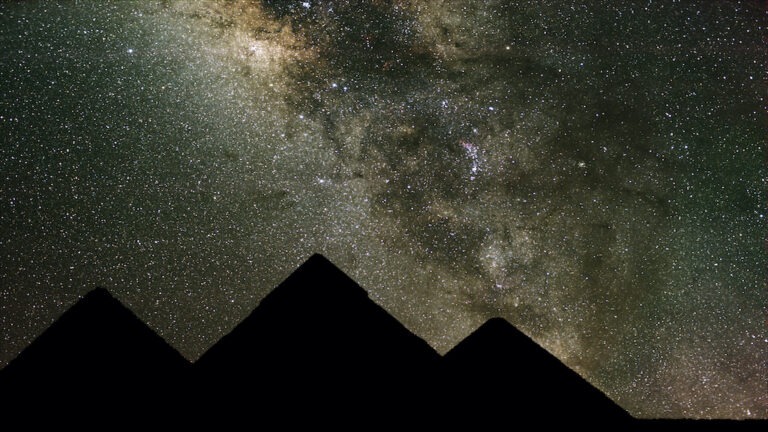
Humans through millennia have gazed into the night’s sky at Orion’s three outstanding stars. Among them was the Greek poet Homer who made mention of the constellation in the Odyssey;. the writers of the Old Testament referenced Orion in two of its books, Job and Amos; and the Egyptian mathematician Ptolemy, who cataloged Orion in his astronomical studies.
Named after the Greek hunter, the constellation of Orion is one of the most famous of all constellations, with nearly every ancient civilization forming an affinity to it from the Middle East to Africa and across the Americas. It is even said that the ancient Egyptians and Mayans used the three stars of Orion’s belt as a guide for positioning the pyramids, to mimic what they had seen in the heavens above.
And modern-day researchers, including Freddy Silva, are putting together the pieces embedded in the myths of the ancient world, asserting that the “gods” descended from the belt of Orion, came to Earth, and became our ancestors.
Many have questioned the origins of humans on Earth, as there seems to be no definitive starting point, but several researchers, such as Graham Hancock, Freddy Silva, and others, have concluded that mainstream science is way off the mark.
Silva cites several interesting sites and cultures that point to extraterrestrial origins of the human race, and his evidence is worldwide. The gods, Silva suggests, may have been more literal than mythical. A god, he says, “was considered any being who had control over the laws of nature… a god is a force of nature.” The gods who descended from Orion and came to planet Earth were human-like, but not quite human.
Much of this mystery has to do with the great flood occurring around 12,000 years ago that is written about in the oldest literature of myriad cultures. Following the flood, the gods seem to have moved on from this world, leaving their children behind to procreate with human women. The offspring were known as Nephila, translating to “the children of Orion.”



